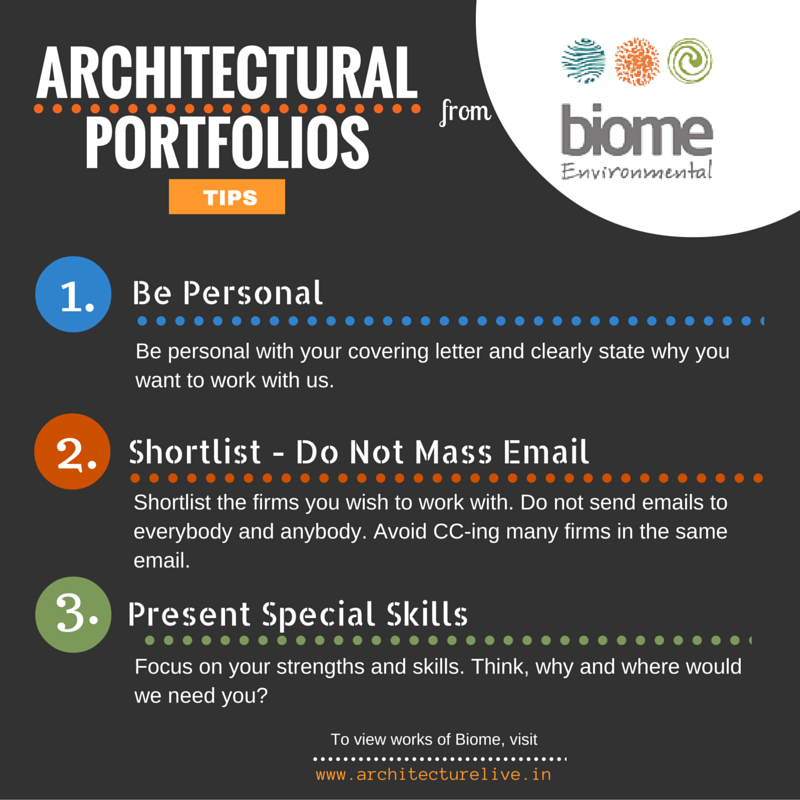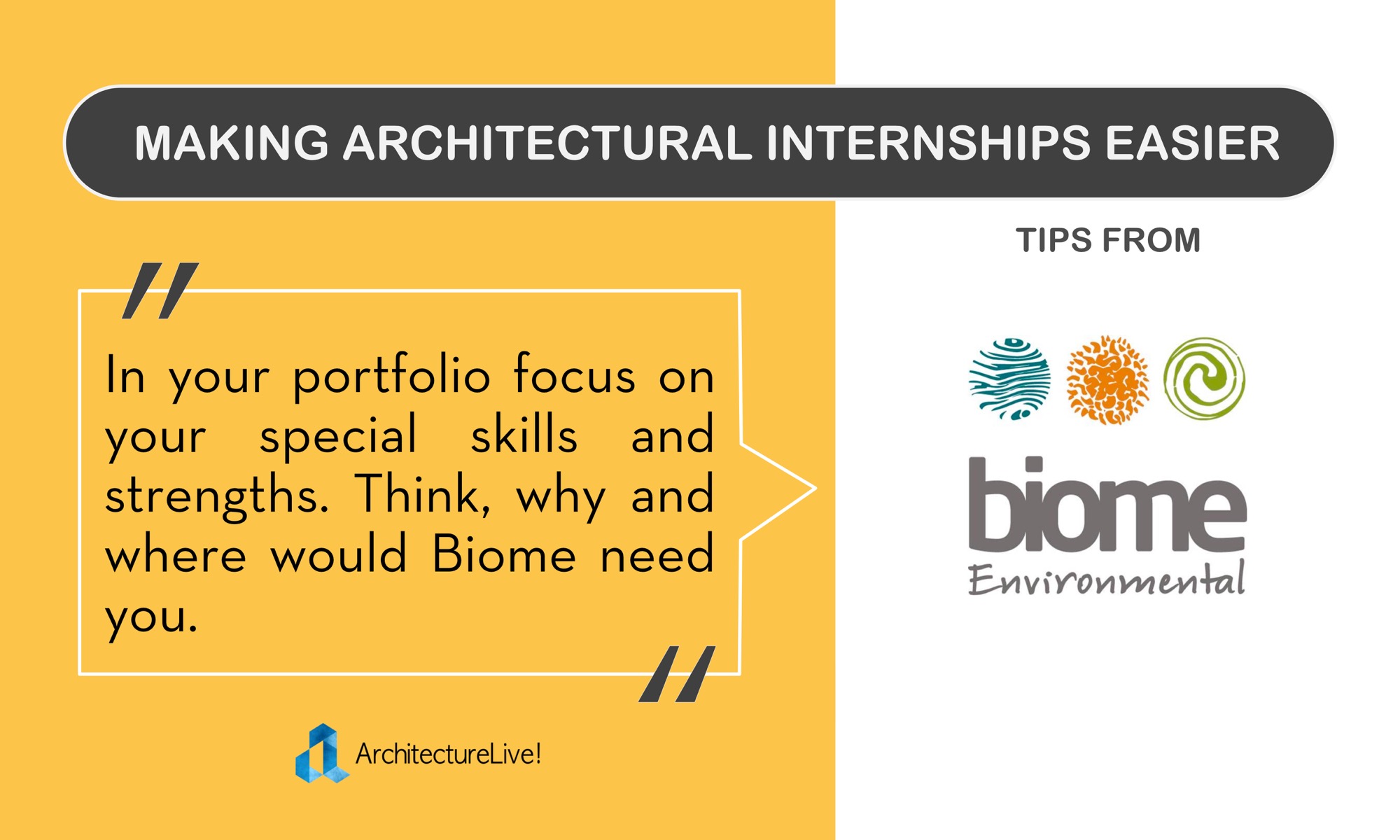We are in the process of compiling views of some architects on what factors affect shortlisting or rejection of interns and fresh architecture graduates. In this post, we discuss the processes at India’s leading architectural firm, Biome Environmental Solutions which focusses on architecture, sustainability, ecology and water.
You can see some of the works by biome published HERE.
Sharath Nayak, the senior architect from Biome, replied to the following questions. We are sure, this will immensely help the students looking for job opportunities in Biome.
What do you look for in Architectural portfolios? + On what basis you shortlist / reject the portfolios?
We look out for relevant skills and experiences to be represented in the portfolio, for the job profiles that we have or the candidate is seeking.
For a fresher architect and interns, this will include skills of sketching, drawings (presentation, details and construction drawings) and software. We try to understand their sense of aesthetic thorough sheet composition and the student designs and also try and gauge how the person has developed over time/experience. We also try to understand their interests by looking at the workshops that they have attended/other offices they have worked/interned in. Many, these days do put in experiences gained thorough workshops/ internships in their portfolios but it does get a bit overwhelming when it makes a larger share of the portfolio.
For the candidates with experience, we want to understand, how the past experience is relevant or useful to us or if it can add a new skill or dimension to the office. Whether or not they have experience of working in teams, guiding younger colleagues and working with consultants. The latter is difficult to demonstrate in a portfolio but a mention of the role played in these projects(probably in the CV) helps us garner the information. We do call references provided or the previous offices after a couple of bad hiring decisions. (The portfolios were good but we later found that the candidate had done very little in the represented projects).
What is the process in your office Architects for selecting interns / fresh graduates?
For selecting interns, we have an architect who also is also the training coordinator. She shortlists and appoints the trainees. We take in 7 interns at a time and try to keep a mix of gender, people from different parts of the country(and world) and different skills. This ensures a healthy atmosphere in the office, cross learning- questioning and one believes(and hopes) constantly increases the quality of work. We also take certain number(of interns) with slightly lesser skills(but where we find that there is potential). This ensures cross learning from other interns and architects and one hopes they go back with better skills and renewed outlook.
For fresh graduates, we look at the portfolios only at the time of vacancies. During other times, our office manager replies to the applications saying that we are not hiring. The shortlisting is done by the senior architect who needs someone for his/her projects and the interview is conducted with assistance from the other architects in the office.
Any special tips you would like to share with the students?
We receive about 3-5 job applications every day for jobs and over 10 internship applications in a day. So it is quite a job to scan thorough all of these.
- Be personal with the covering letter. It is reassuring for us to know that the candidate has researched and understood our work and to understand why this person wants to work with us.
- Do not mass mail. Do select the firms that you like and apply.
- If you have special skills, do demonstrate them. We recently had a person apply to us and demonstrate his experiences to us by a story book of his sketches. It caught our eye. But- this still also has to demonstrate the skills for the job.









